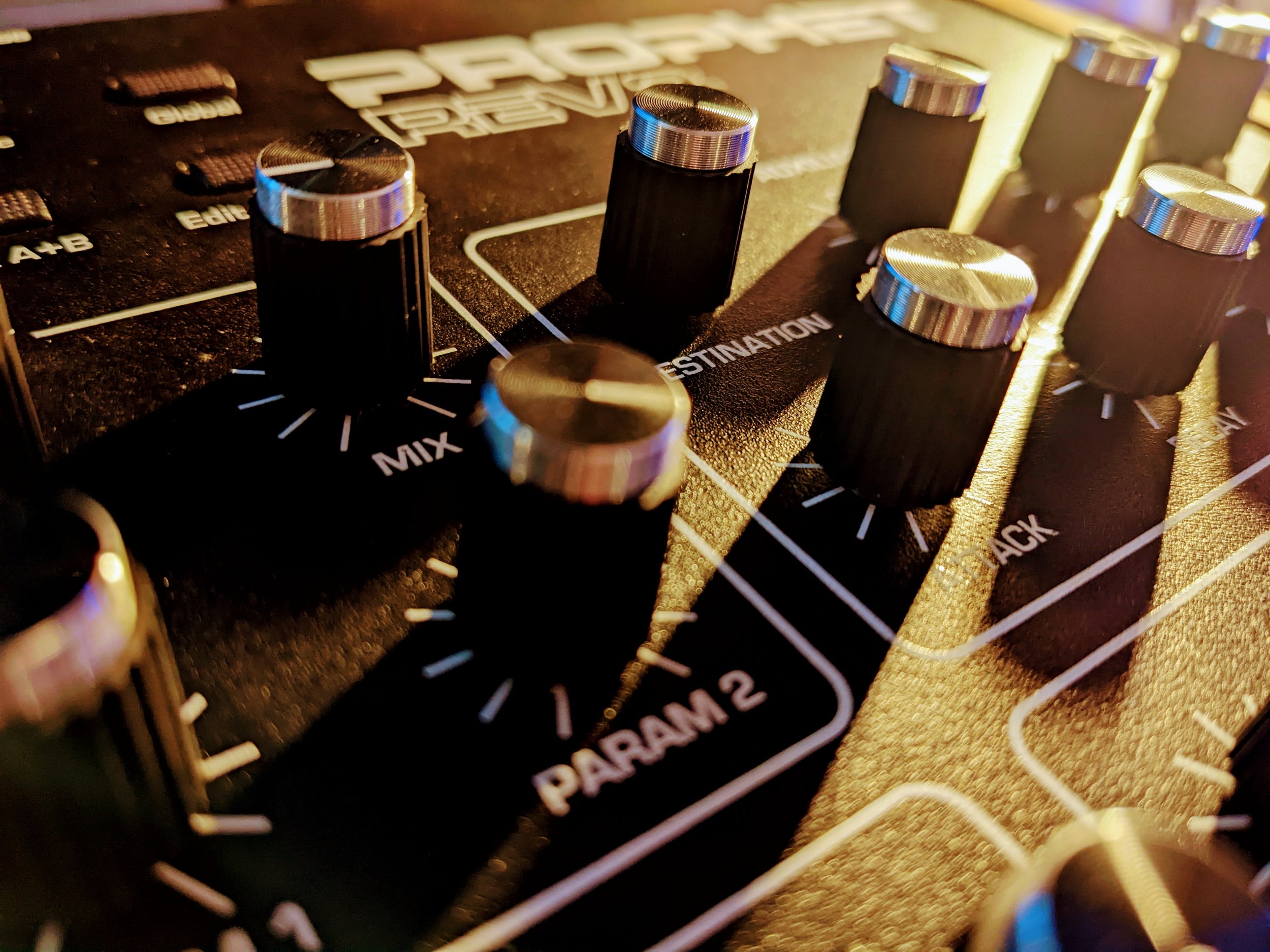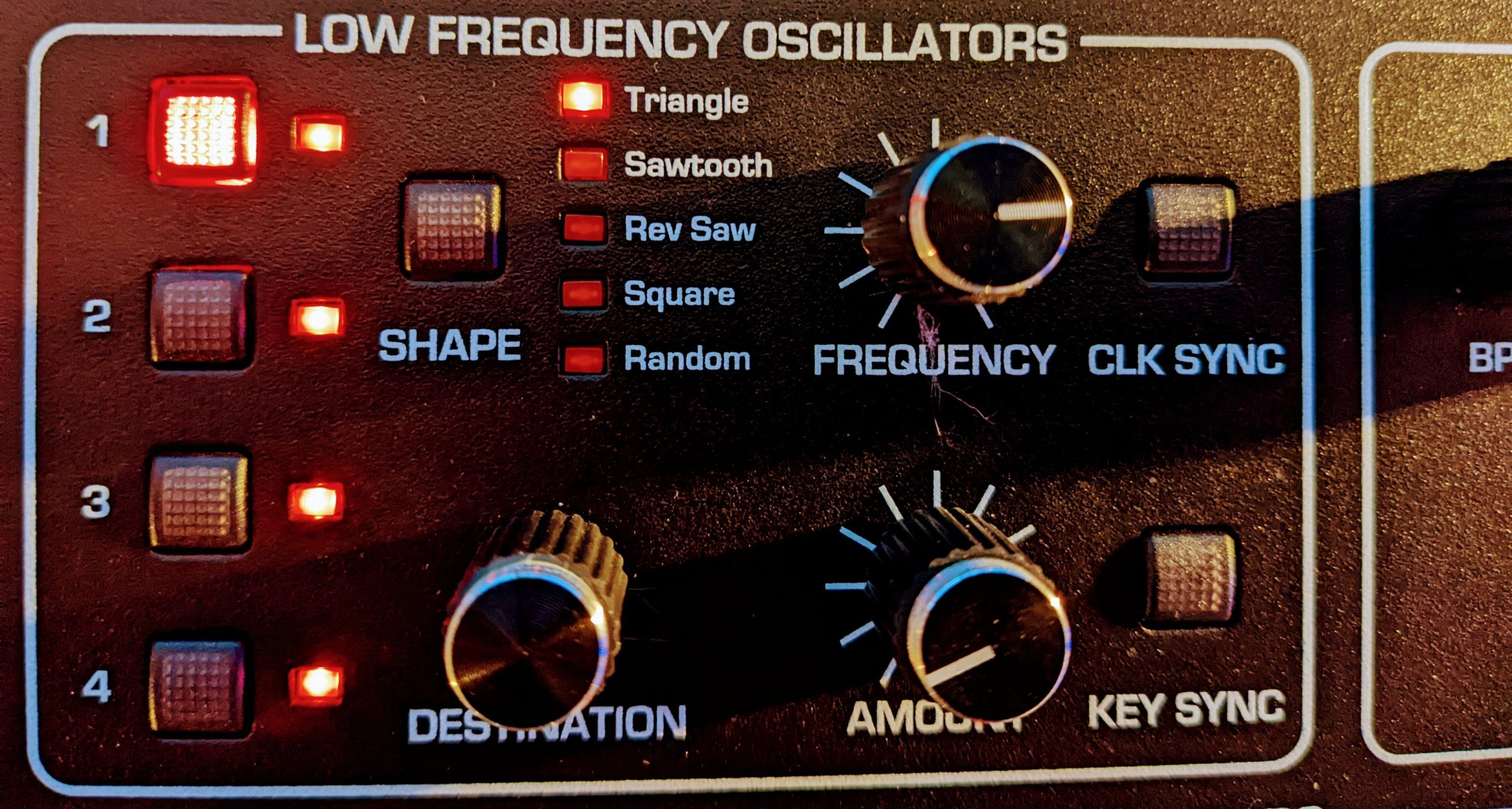Sequential Prophet Rev2 Review 2022
Brassy. Thin. “Not real analog.” These are a few common comments that have appeared since the Sequential Prophet Rev2 first came out in 2017. Is it, though?
Or is it the best polyphonic analog synth at its price range, as others say?
Or is it both?
Let’s take a dive into the Rev2, and see what we discover as we explore the synth.
OSCILLATORS
The oscillators on the Rev2 air fairly polarizing, it seems. Because they’re not true VCOs, the traditional analog purists are dismissive of them. But despite their tuning being digitally-controlled, they are still analog oscillators. Just analog oscillators not prone to tone drift when the temperature changes.
All the typical waveforms are here - Sawtooth, Triangle, Pulse, and one extra - Saw-Triangle.
What makes these waveforms truly exceptional, is that all of them can be pulse width-modulated (not just the Pulse/ Square). Sequential calls it Waveshaping, but it is essentially pulse width modification. And it sounds cool.
The best part?
You can link the waveshapes to LFOs or any other parameter, and create exotic, moving, sweeping tones that you may not hear elsewhere.
Oscillators also have a coarse tune that shows up on the screen as the actual note you’re scrolling to (and its octave position) for creating chords or octave spreads, and also Fine Tune controls for each oscillator, for custom detune amounts (which is great for Trance and Psytrance leads).
An added bonus feature that’s super nice is the OSC Slop feature - it allows for fine-tuned mimicry of the random tuning instability present on vintage analog synths. It can be very subtle, or very extreme, and can be useful for creating detuned leads and pads with a little more organic movement
Sync is also available, for when you want to create more metallic sounds and textures.
The general sound of the oscillators, especially the Sawtooth, is, as some users describe, very brassy and in your face. This is due in large part, to the Curtis filter (discussed below), and the lack of innate low-mid saturation common among Moogs and other analog synths. Any saturation baked into the signal chain on this synth appears to emphasize the upper mids, and as such, this synth is well suited for biting leads, and really tight plucks.
FILTER
What review of the Rev2 would be complete without talking about one of its biggest selling points?
The Curtis filter.
An analog filter that’s seen use in Prophet synths since the 1970s, it can self-resonate in 4-pole mode (but doesn’t in 2-pole mode), it’s what helps give the Rev2 its characteristic tight sound and brassy character.
Compared to the filters on synths like the JP8080 or Slim Phatty, the Curtis filter and attached ADSR+Delay Envelopes are tight, clean, and perfect for making wide long pads, and tight, punchy plucks and basses.
One thing we’ve noticed is that if you’re trying to do plucky lopassed techno rumble type basses, you’ll need to keep the Filter and Amp Release times longish, otherwise you end up with a peculiar snap-back sound from the filter. It won’t impact the bass movement at all, even when in Unison/ Mono mode, so Psytrance and Techno enthusiasts won’t have problems with longer release tails on driving basses. It’s just somewhat unusual.
In general, the filter is great, and is reminiscent of the Nord Lead 3, but much much smoother. Juicier, even.
It’s a very warm, organic sound.
AMPLITUDE
The ADSR Envelope may be VCA, but it behaves more or less like any other, so there’s not really much to say here. Each parameter is nice and tight, so you can achieve as snappy or as gentle of sounds as you need.
And most importantly, it has a Pan Spread feature that in single voice/ oscillator mode acts like an alternating auto-pan feature, and like a stereo widener in Unison mode. The Pan Spread is mono-stereo compatible, too. So you can make bouncing binaural plucks and midrange basses, and they’ll pingpong back and forth for stereo width, and will collapse to mono with no phase cancellation. Very helpful for adding width without using any external tools.
LFO
This is where things start to get really interesting. The Rev2 sports 4 LFOs, and multiple LFO types, including a Random waveform that can be sped up into something like using Noise as a modulation source.
The other waveforms are pretty standard - Triangle, Saw, Reverse Saw, Pulse. Nothing too out of the ordinary here. Initially they’re free-running, but can be clocked, and can be assigned to most other parameters, which gives you piles of sound designing capabilities.
Be wary of modulating pitch with it though. It tends to cause extreme pitch warping effects at even moderately low amounts.
MODULATION
Now the Modulation section is where this synth stands apart from other analogs. It has 8 slots in the Mod Matrix, and has an additional 3rd envelope with full ADSR controls, so you can modulate an additional parameter freely of the other slots.
And the regular Mod Matrix slots allow you to control just about any parameter by 22 sources, giving you tremendous sound sculpting capabilities with minimal effort.
EFFECTS
The effects on this are something of a mixed bag. The Delays are all great - and increasing their rates doesn’t cause any pitch warping effects that plague a few VST Delay FX.
The Chorus is decent, although limited in editable parameters. It does a nice job widening sounds and unless pushed to extremes, doesn’t cause super unpleasant phasing or pitch warping effects.
The Phasers and Flangers are alright, although they lack the degrees of flexibility that the Virus, Mininova, and Blofeld offer, so unless you’re very careful with dialing them in, you can end up with weird metalllic howls rather than pleasant swooshes.
UNISON
Now, the Unison is both the Rev2’s great strength, and also a little bit of a weakness. Being able to sum as many oscillators as you want and then detune them in the Unison section is great, and can yield some fat SuperSaw type sounds, which are great for leads and arps.
But.
Unison is Monophonic only. So no big SuperSaw pads or stacked chord leads like you can do with a Virus, or JP8080, or Blofeld.
Sweet lead toplines and low octave lead support, that’s where this shines in unison mode.
One interesting feature, similar to the Blofeld, is that you can dial in the amount of voices being summed in Unison, and then you can detune from there. So you can make a 2 voice sound with detuning for oldschool detuned Saw leads, or you can go for all 16 voices with a tiny touch of detuning, and creating huge solo leads that’ll shake your speakers.
Pity there isn’t a variable unison mode that lets you sum however many voices for a monophonic aspect, and then use the remaining voices polyphonically. That would yield some interesting and exciting tones. Can’t have everything, we suppose.
CONCLUSION
So, is the Prophet Rev2 worthit? Does it live up to the hype?
Yes.
It’s bold, in-your-face, yet just neutral enough to sit cleanly in a mix. It has modulation capabilities that outstrip many of its competitors, and it has enough voices to be usable for both pads, supersaw leads, and dirty punchy basses. A small touch of distortion fattens it up to sound comparable in warmth to a Moog, and the Curtiss filter adds a bouncy roundness to sounds that makes it fantastic for plucks. And the Pan Spread function is incredibly useful for creating wide sounds, and sounds that bounce around the stereo field, adding mono-compatible customizable width.
The Rev2 is a definite winner for analog polys.
Hear it in action:








